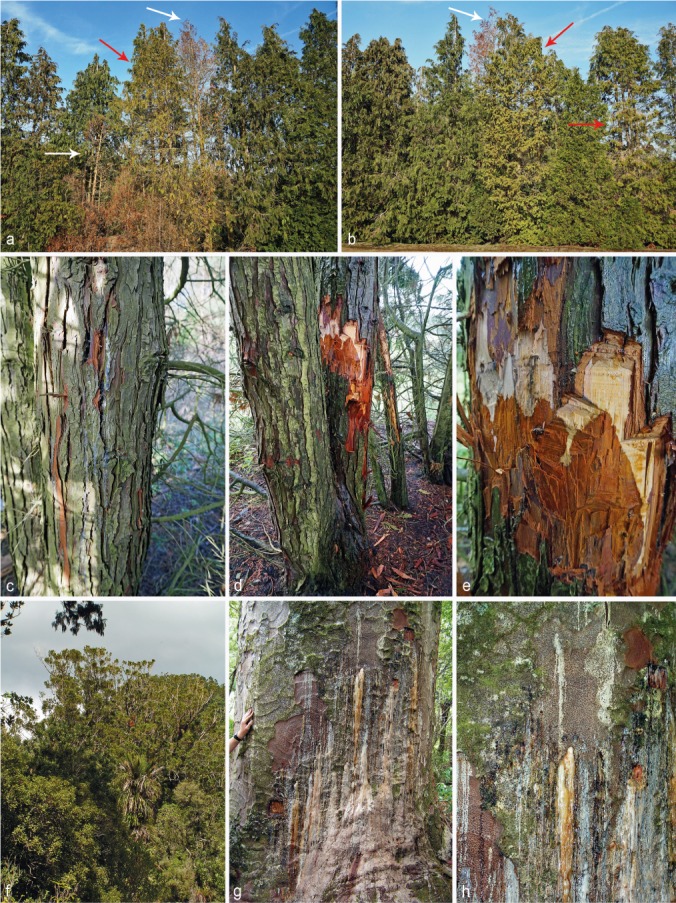Fig. 5.

Symptoms of Port-Orford-cedar (Chamaecyparis lawsoniana) decline and mortality caused by Phytophthora lateralis in the UK (a–e) and of kauri (Agathis australis) dieback caused by P. agathidicida in New Zealand (f–h). a, b. Shelterbelts of C. lawsoniana containing recently dead trees with sparse brown foliage (white arrows) and declining trees with chlorotic foliage and increased transparency (red arrows); c. C. lawsoniana stem with resinous exudates indicating necrotic lesion of the inner bark caused by P. lateralis; d. flame-shaped reddish brown inner bark lesion on a C. lawsoniana caused by P. lateralis, extending from the main roots to more than 1 m stem height; e. flame-shaped reddish brown lesion front caused by P. lateralis on a C. lawsoniana tree (detail from d); f. mature A. australis in a diverse kauri forest showing advanced thinning and dieback of the crown; g. massive stem of a mature A. australis with tongue-shaped resinous bark lesion caused by P. agathidicida, extending from the main roots up to 2 m stem height; h. resin exudations marking the front of the inner bark lesion caused by P. agathidicida on a mature kauri stem (detail from g). — Photos: a–e: A. Pérez-Sierra; f–h: T. Jung.
